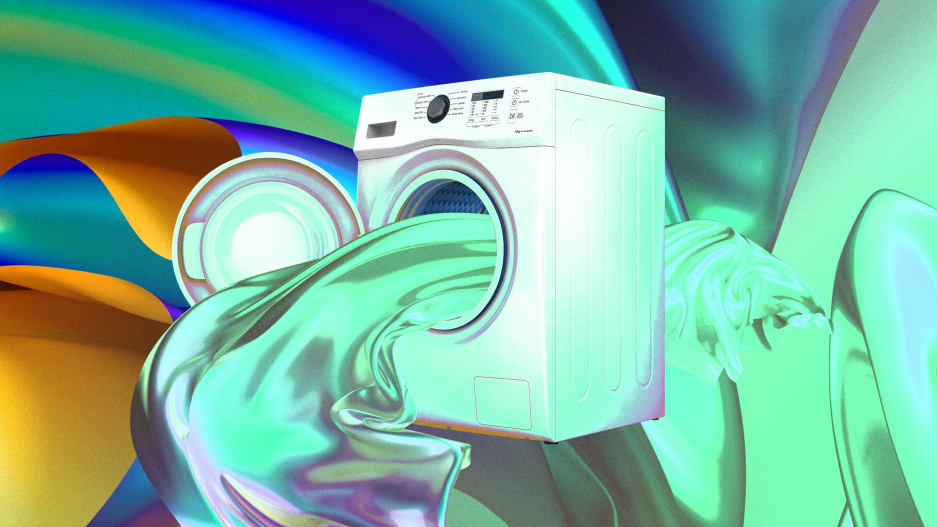
How to tell the difference between brands that market themselves as sustainable and ones that actually commit to sustainability in a holistic way.
Environmental activists have been sounding the alarm about climate change for decades, but only now is public sentiment shifting: Research finds that more Americans are worried about climate change than ever before. According to a Yale University survey released last year, 73% of Americans now believe in global warming, an increase of 10% since 2015. Nearly half of Americans believe they are being personally harmed by climate change right now, about 15% higher than in 2015.
That has changed what people value in their consumer goods. A just-released study by the Global Fashion Agenda, an international organization devoted to helping the fashion industry become more sustainable, found that 75% of consumers around the world view sustainability as extremely or very important, and mentions of sustainability with regards to fashion in social media have spiked between 2015 and 2018.
But how can you tell the difference between brands that market themselves as sustainable and ones that actually make sustainable products? “Fundamentally, it’s a good thing that brands are feeling pressure to keep up with consumer demand for sustainable companies and products,” says Andrew Chung, who has been investing in sustainable startups since 2006, first at Lightspeed and Khosla Ventures, then through his own company, 1955 Capital. “But now the challenge is to distinguish between brands that are making serious, holistic commitments to sustainability, and brands that are making more superficial tweaks.”
In the fashion world, many brands tout a low-carbon footprint, use of recycled plastic, sustainably sourced materials, or a made-to-order business model that reduces excess inventory waste. Some talk about using less water than traditional production methods, while others talk about using deadstock (which are are bolts of fabric that other brands purchased but did not use). Which methods are really helping reduce global greenhouse gas emissions? Which ones are just hype? Here’s a three-part guide to help you figure it out.

HOW HOLISTIC IS THEIR COMMITMENT TO SUSTAINABILITY?
Given that consumers care about sustainability, it makes sense that brands want to market their most eco-friendly products. But buyer beware. A large sportswear brand may market a small capsule collection that is made from recycled plastic, or sustainably sourced cotton, which gives the entire company a halo of sustainability, when, in fact, it makes up only a tiny fraction of the company’s total sales, the majority of which are made from regular old virgin plastic.
“All of these efforts are worth celebrating,” says Francois Souchet, the fashion lead at the Ellen MacArthur Foundation, which is committed to helping businesses find new uses for materials after we’re done with them. “But the brands that really stand out when it comes to sustainability are the ones that have a more holistic vision, and think about the entire life cycle of a product, rather than just one aspect of the process.”
So how do you begin to glean whether a brand considers its entire environmental impact? If there’s a brand you’re interested in, go beyond its most-advertised sustainable product, whether its a recycled plastic sneaker or an organic cotton T-shirt. Pick a couple other products on the brand’s lineup and do a deep dive on them to see if they are also sustainably made. Then dig around on the brand’s website to learn more about its processes. Does the brand use mostly recycled or biodegradable materials? Does the brand carefully study its own carbon footprint and offset emissions? Does it allow customers to repair and then eventually recycle products? Does it use recyclable packaging materials?
If a brand is working hard to be more sustainable, it usually provides a lot of information in the “about” or “sustainability” page of its website. (Or you can do a Google search for the brand’s name along with the words “sustainability” to locate this page.) Be wary of brands that talk about their goals and achievements without providing much detail; this could be a sign that it is greenwashing, rather than actually doing the work of making its supply chain eco-friendly. If a brand is serious about its commitment to sustainability, it will share specific information about what it has already achieved, and when it hopes to reach new goals.
Patagonia stands out even among eco-friendly brands for considering its entire supply chain when making products. The brand has been experimenting with recycled plastic fibers since 1993, when it was still difficult to find. Now, the vast majority of synthetics used in Patagonia’s clothes come from recycled sources, but the company also uses recycled wool, recycled down, and reclaimed cotton. The brand has committed to becoming carbon positive by 2025 in a variety of ways, including moving to renewable energy and sequestering carbon. (All of this information is readily available, in great detail, on the brand’s website and in its annual report.)
Patagonia is way ahead of the pack in terms of sustainability, but it offers a model to help consumers judge whether other brands are making a holistic effort to be sustainable, or just offering one or two sustainable products.

IS IT A STARTUP OR A LARGE CORPORATION?
Companies of different sizes have varying challenges when it comes to creating eco-friendly supply chains. Startups generally have smaller, more manageable supply chains, so they can more easily shift away from polluting suppliers toward greener ones. On the other hand, smaller companies have a smaller impact because they sell fewer products, and often don’t have the resources to invest in new, cutting-edge sustainable techniques–like fabric or sneaker recycling–that could possibly propel the entire fashion industry forward.
Consider Everlane and Adidas, two companies I wrote about in a magazine story recently. They are both working to eradicate virgin plastic from their supply chains. While Everlane, which generates just over $100 million in annual revenue, promises to only use recycled plastic in its supply chain by 2021, Adidas, a $21 billion company, requires more time to accomplish the same goal, setting a target of 2024. Everlane is also more comprehensive in its ambition, saying it will cut virgin plastic from its offices, stores, and packaging materials as well, while Adidas will only cut virgin plastic from its shoes and clothes. The differences in their approach makes sense. Since Adidas has a much larger supply chain, it will take time to comb through every last product and supplier. On the other hand, Adidas’s potential impact is much greater, given that it makes 403 million pairs of shoes every year, and about 92 million are made from virgin plastic.
All of this means that you should have slightly different expectations for large and small companies. You should expect both startups and established corporations to choose sustainable suppliers, but you can expect larger companies to take longer to achieve their goals. However, larger companies often have the resources to invest in innovation labs that can lead to bigger breakthroughs. Indeed, according to a recent report from the Global Fashion Agenda, the fashion industry needs major developments in infrastructure to get to the next level of sustainability. “Many brands have reached the limit of what they can do with the current infrastructure,” says Morten Lehmann, the organization’s head of sustainability.”
Some large companies are stepping up. For instance, Adidas is working on developing a new sneaker that is designed to be entirely recyclable,something uncommon in the world of shoes. The H&M Foundation, the charitable wing of the fast-fashion company, is investing in projects that will encourage fabric recycling, which is not currently happening at a large scale. And Nike is inventing new materials like Flyleather, which uses leather scraps from the cutting room floor that are more sustainable than traditional leather. Consumers should continue to expect large corporations to take the lead on this kind of research and development.

DOES THE BRAND WANT YOU TO BUY STUFF YOU DON’T NEED?
One of the biggest problems in the fashion industry is that it encourages consumers to buy products that they don’t really need, simply because they are in style and on trend. Ultimately, individual innovations don’t matter much if a brand keeps pushing new products on you. After all, choosing not to buy a product is the most sustainable thing you can do as a consumer. Buying five sustainably produced items that you don’t need is still a waste of resources.
It seems like a tall order to expect companies, whose survival depends on selling products, to encourage you not to buy new things. But there are brands that do this. Patagonia, for instance, has a WornWear program which invites customers to bring their old items back to be repaired so that you can keep wearing them for years, rather than throwing them out. Other brands try and discourage over-consumption by selling classic, durable outfits that are designed to last more than a season. Eileen Fisher, another brand known for its sustainable practices, deliberately sells very simple silhouettes–like flowing tunics and button-down shirts–in classic colors like white, black, and navy. Startup Aday creates clothing that is versatile and can often be worn in at least two ways. The company encourages consumers to “do more with much less.”
In some ways, encouraging consumers to buy fewer items is the most radically sustainable thing any fashion brands can do. That means rethinking their business model to set more modest targets for growth. In general, brands that are able to achieve this tend to be privately owned, and don’t have unreasonable expectations from shareholders or investors pushing them to sell more and more products. “The fashion industry is making great strides when it comes to sustainability,” says Lehmann. “But all of this good is being outpaced by the industry’s pace of growth.” According to the Global Fashion Agenda’s forecasts, the fashion industry is going to grow from its current size of $1.7 trillion to $3.3 trillion at a predicted growth rate of 5% per year.
For now, it largely falls on consumers to check their own buying behavior. To help you on your quest to own less, apps can help. Finery, for instance, collects receipts for your recent online clothing purchases and helps you style outfits with what you already have. Cladwell allows you to track every item in your closet and comes up with 10,000 browsable outfits so you never feel like you have nothing to wear.
–
This article first appeared in www.fastcompany.com
Guest Author: ELIZABETH SEGRAN, PH.D., IS A STAFF WRITER AT FAST COMPANY. SHE LIVES IN CAMBRIDGE, MASSACHUSETTS. HER WORK HAS BEEN PUBLISHED IN THE ATLANTIC, THE NEW REPUBLIC, FOREIGN POLICY, FOREIGN AFFAIRS AND THE NATION.
